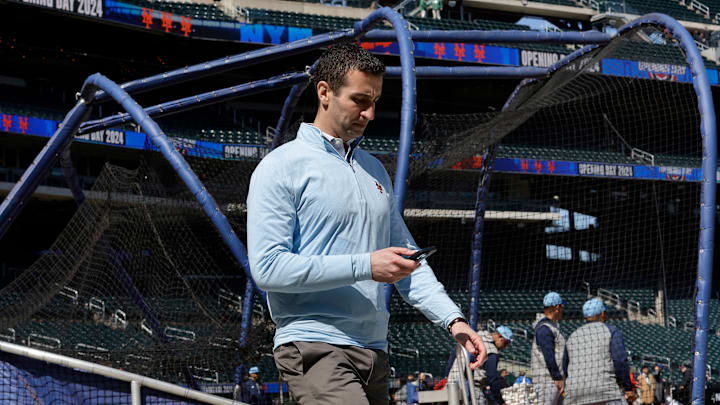At points throughout the 2025 season, the New York Mets have looked like an unstoppable force. At others, the club has appeared deeply flawed. Such are the ebbs and flows of a 162-game season. What is clear is that several holes in roster construction have come to the forefront, begging to be addressed.
However, just because a hole has been uncovered, doesn't mean that a move may necessarily be made. For one thing, the Mets only have a finite amount of resources, and in some cases, that prospect capital is more valuable to their future than what it can be exchanged for at the present moment.
Another thing that David Stearns will have to grapple with is what the market presents as possible solutions. Just because the roster has an area of weakness doesn't mean that the trade market will present a solution that is appreciably better, or at least, one that is a big enough difference maker to justify the cost.
As such, the front office will have to go through a delicate balancing act, evaluating competing priorities and making the right call when it comes to shoring up present needs without sacrificing too much of the future's talent pipeline.
Simply put, some needs will present themselves as severe issues that must be addressed, while others, with further examination, will pale in comparison. Here's how those trade deadline holes stack up in terms of severity.
1. The Mets top priority should be addressing the starting rotation
It is tough deciding what the Mets top need is, but ultimately one has no choice but to view the starting rotation as priority number one. The Mets were dealt two big blows to the unit in spring training with both Sean Manaea and Frankie Montas hitting the shelf.
Since then, the Mets' vaunted pitching lab has worked wonders with the likes of Griffin Canning (3.77 ERA), Tylor Megill (3.95 ERA), and other fringe big league starters, leading the Mets' starters to post a league-best 2.93 ERA from opening day through June 15.
However, the injury bug has set in again, and the Mets are reeling. Canning is done for the year with a ruptured Achilles, Megill will miss time with a sprained elbow, but the biggest blow was to staff ace Kodai Senga who went down on June 13 with a strained hamstring, leading the Mets' rotation to post a 5.74 ERA from June 13 through July 5, ranking 28th in the league.
Senga is nearing a return, and despite a setback, so too is Sean Manaea. Still, the early returns on Frankie Montas (6.00 ERA through two starts) have not been good, and much of the Mets' rotation depth has been depleted.
On top of that, while Clay Holmes has answered the bell this year, converting to the starting rotation, there should be some questions as to how much longer the Mets can expect him to keep this up. Throughout his career, albeit the vast majority coming out of the bullpen, he's run out of gas in the second half with a career ERA of 4.64 versus a 3.00 mark in the first half.
The bottom line is that the Mets will need four starters they can trust once October rolls around. Senga and Manaea will likely be two of them. David Peterson and his 3.18 ERA could be another, but the southpaw has never topped 121 innings in a single season, and it remains to be seen if Holmes and/or Montas will be able to be the fourth as the dog days of summer give way to the autumn chill of October.
Counting on what's already in-house also means gambling that the injury bug that's plagued the Mets all season miraculously gets squashed, which, given recent history, isn't a safe bet.
Lastly, the starting pitching market is flush and should only get deeper as more teams on the periphery of playoff races decide that they are really pretenders rather than contenders.
A pair of starters from the division rival Miami Marlins present boom-or-bust options in Sandy Alcantara and Edward Cabrera. Old friend Seth Lugo may hit the trade block as the Kansas City Royals fall out of the AL Wild Card race. If the Arizona Diamondbacks decide to sell, Zac Gallen or Merrill Kelly could serve as intriguing options as well.
Mitch Keller would be an option that not only boosts the rotation this season, but also for the next few seasons as well, while other back-end types like Andrew Heaney and Erick Fedde exist as well.
The depth of the starting rotation options potentially on the market is what lifts this need to the top of the list, as this is probably the greatest combination of need and potential impact solution the Mets will be able to find.
